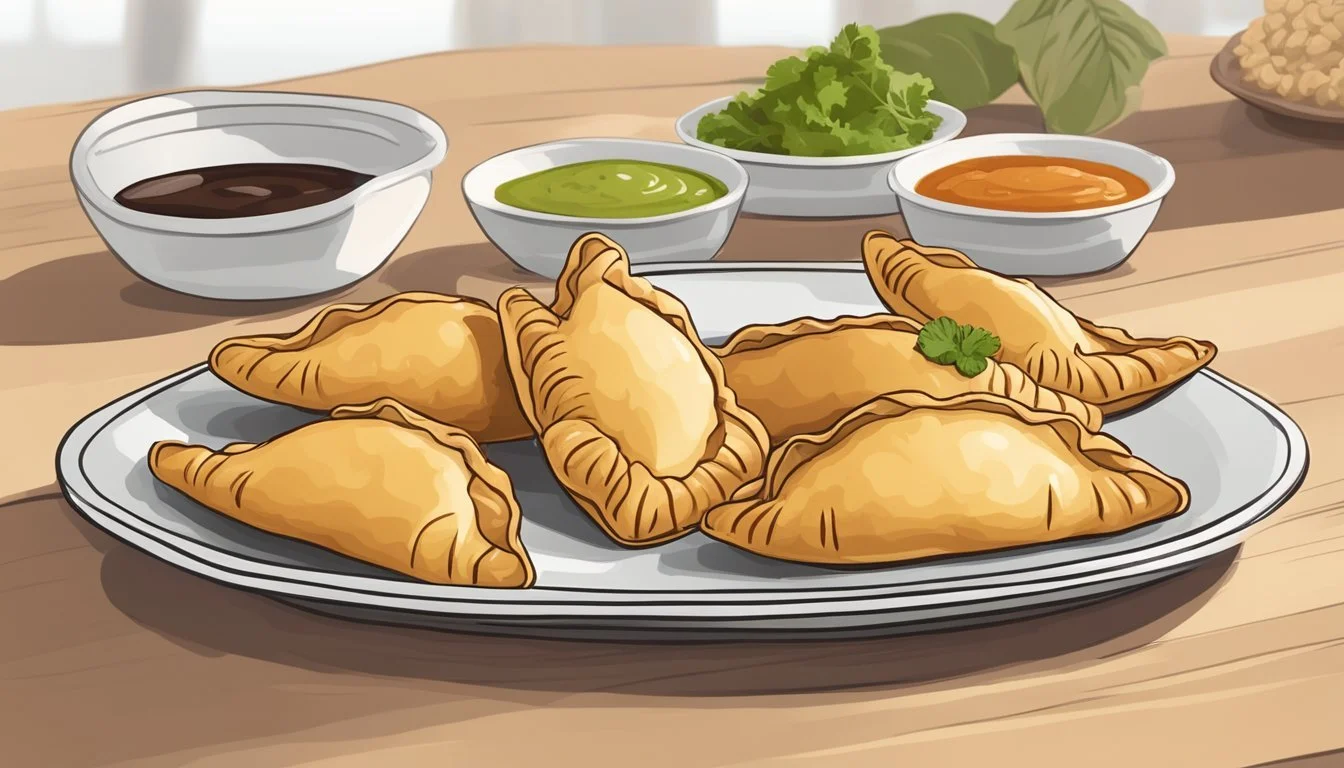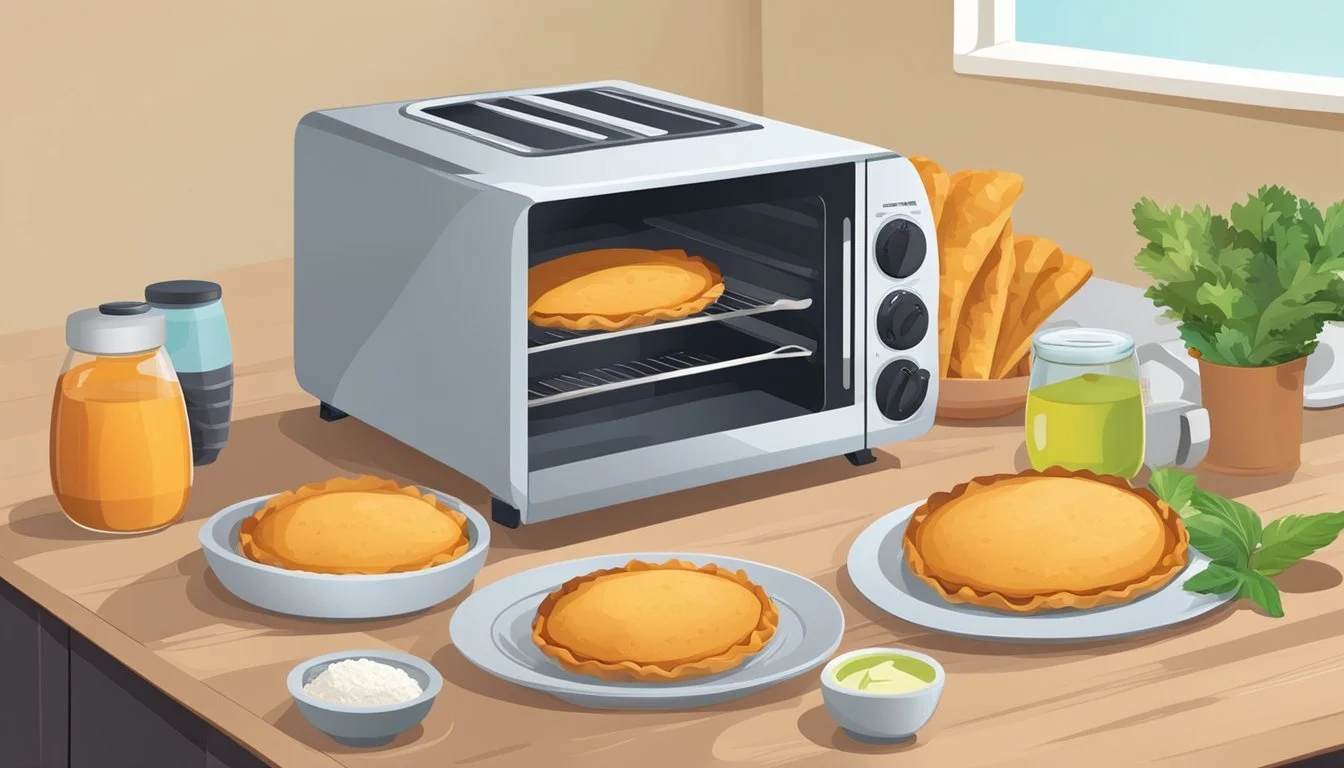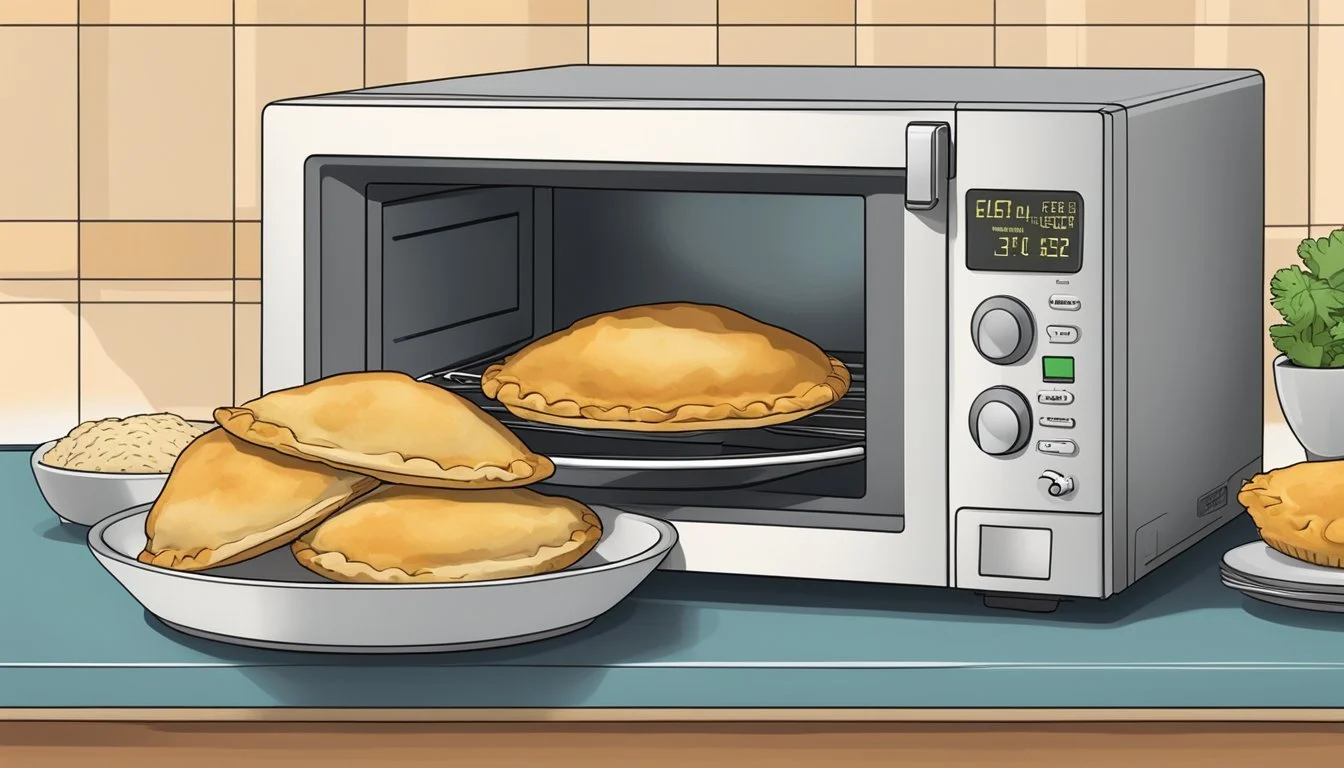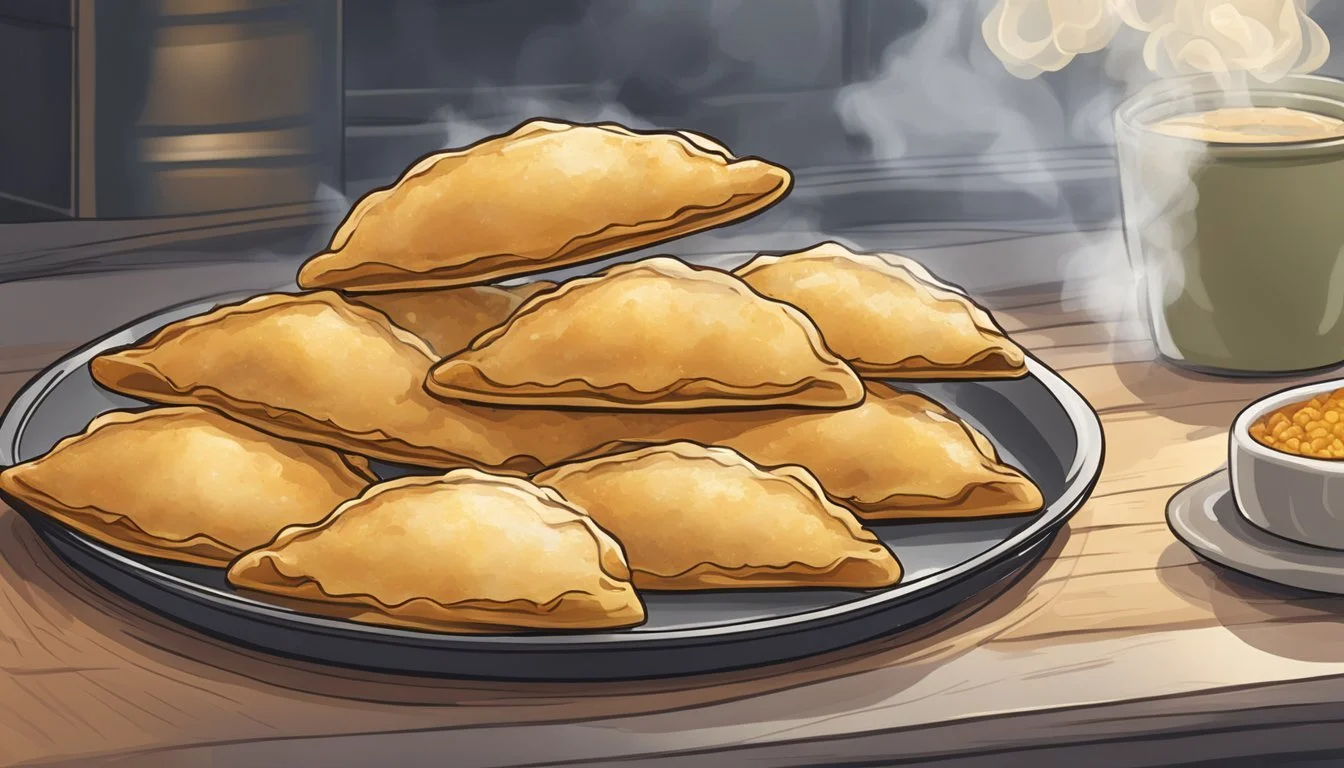How to Reheat Gluten-Free Empanadas
Tips for Perfect Results
Reheating gluten-free empanadas while maintaining their delicious texture and flavor can be a bit tricky. Getting it right ensures that those on a gluten-free diet, including individuals with celiac disease, enjoy their meal without compromising taste. The best way to reheat gluten-free empanadas is by baking them in the oven at 350ºF for about 10-15 minutes until they're heated through.
Using the oven helps the empanada dough maintain its crispiness while evenly warming the filling. For those who prefer a quicker method, microwaving is an option, but it can make the dough chewy instead of crispy. Opting for a toaster oven can also yield good results by balancing speed and texture.
Ensuring the empanadas are stored properly before reheating is crucial. Keep them in an airtight container to retain moisture in the dough. This way, whether using an oven, microwave, or toaster oven, gluten-free empanadas will come out tasting fresh and delicious.
Understanding Gluten-Free Empanadas
Gluten-free empanadas require special attention to ingredients, particularly the dough. Using the right blend of flours ensures the perfect texture and flavor. Key components include various gluten-free flours, xanthan gum, and appropriate methods for achieving a dough that replicates traditional empanadas.
The Basics of Gluten-Free Empanada Dough
Creating gluten-free empanada dough involves substituting traditional wheat flour with gluten-free alternatives. Gluten-free flours such as almond flour, coconut flour, cornstarch, and specialized blends like Cup4Cup are essential.
Xanthan gum or guar gum is often added to mimic the elasticity and chewiness of gluten. Proportions matter: too much xanthan gum can make the dough tough, while too little can result in a crumbly texture.
Mixing the dough requires careful moisture balance. Gradual addition of liquids like water or milk ensures the dough doesn’t become too sticky. For best results, let the dough rest before rolling, allowing the flours to hydrate.
Choosing the Right Gluten-Free Flour Blend
Selecting the appropriate flour blend is crucial for gluten-free empanadas. All-purpose gluten-free flour blends commonly found in stores can vary in composition. Look for blends that include a mix of whole grain flours and starches for better flavor and texture.
Popular choices include mixes that combine rice flour, sorghum flour, and cornstarch for a balanced dough. Specialty blends like Cup4Cup are specifically designed to replace wheat flour in a 1:1 ratio, simplifying the process.
In some recipes, it’s beneficial to combine different flours. For instance, almond flour can add richness and coconut flour can lighten the texture. Reading ingredient labels and experimenting with blends can lead to discovering the perfect mix for your empanadas.
Preparation Techniques for Empanadas
Preparing empanadas involves mastering the dough and filling. These steps ensure your empanadas have the right texture and flavor, making them a delight to eat.
Rolling and Cutting the Empanada Dough
To begin, refrigerate the dough for at least 30 minutes. This cooling helps the butter firm up, creating a flaky texture.
Roll the dough on a floured surface to prevent sticking. Aim for a thin, uniform layer, approximately 1/8 inch thick. Use a round cutter or a 4-inch diameter drinking glass to cut circles from the rolled dough.
Ensure each dough piece is even to guarantee consistent cooking.
Creating the Perfect Empanada Fillings
Prepare the filling separately. Popular fillings include shredded chicken, beef with black beans, or a cheese mixture.
Cook the beef with salt, spices, and beans until tender. For chicken fillings, mix shredded chicken with cheese and seasonings. Ensure all ingredients are well combined.
Cool the fillings completely before adding them to the dough, as this prevents the dough from becoming soggy. Use about 1-2 tablespoons per empanada, adjusting based on the size of the dough circle. Fold the dough over the filling, sealing the edges by pressing with a fork or crimping with your fingers.
Chill the filled empanadas before baking for a firm and flaky crust.
Cooking Gluten-Free Empanadas
Cooking gluten-free empanadas involves baking or frying the dough to perfection. Achieving the right texture is key, whether one prefers a baked or fried finish.
Baking Versus Frying
Baking and frying are two common methods for cooking gluten-free empanadas. For baking, preheat the oven to 350°F and line a baking sheet with parchment paper. Arrange the empanadas on the sheet and apply egg wash for a golden finish. Bake for about 15 minutes or until they turn golden brown.
Frying involves heating oil to 350°F in a skillet. Fry each empanada for 5 to 7 minutes, flipping as needed. This method can yield a flakier, more crisp texture compared to baking. Use a deep skillet with at least 1/2-inch of oil for best results.
How to Achieve a Crispy Texture
To get a crispy texture, chilling the dough before cooking is essential. Whether baking or frying, ensure the dough has been refrigerated for at least 30 minutes. Applying a light layer of flour on the rolling surface can help when forming the empanadas.
For baking, brushing the empanadas with egg wash before placing them in the oven enhances the crispy texture. When frying, it's crucial to maintain oil temperature evenly. Overcrowding the pan lowers the oil temperature, resulting in less crisp empanadas. Fry in small batches and drain excess oil on paper towels.
Reheating and Serving Recommendations
To enjoy the best flavor and texture, careful reheating of gluten-free empanadas is essential. Additionally, thoughtful serving suggestions can elevate the eating experience.
Proper Reheating Techniques
For the best results, reheat gluten-free empanadas using an oven. Preheat the oven to 300°F (150°C). Place the empanadas on a wire rack on a baking sheet, ensuring they are evenly spaced to allow proper air circulation. Heat for 10-15 minutes, depending on their size. This method keeps the exterior crisp and the filling warm without becoming soggy.
If using a microwave, place empanadas on a microwave-safe plate. Cover with a damp paper towel to retain moisture. Heat on medium for 30 seconds to 1 minute. Check and heat for additional intervals if needed.
On a stovetop, use a skillet over low heat. Add a small amount of oil and reheat each side for 2-3 minutes. This method helps to maintain a crispy crust.
Serving Suggestions for Enhanced Enjoyment
Pair reheated empanadas with various accompaniments to enhance their flavor. Salsa and guacamole are excellent choices. For a zestier option, consider a side of pico de gallo.
Sweet empanadas can be sprinkled with sugar and cinnamon after reheating for added flavor. Allow empanadas to rest for 2-3 minutes after reheating; this helps the filling thicken and the pastry crisp up further.
For a heartier meal, serve alongside a fresh salad or a side of beans and rice. These sides complement the rich filling of gluten-free empanadas, providing a balanced and satisfying meal.
Preservation and Storage of Empanadas
Proper storage is essential to maintain the freshness and flavor of gluten-free empanadas. Utilizing the right techniques ensures the empanadas remain delicious whether stored in the fridge or freezer.
Freezing and Refrigeration Best Practices
Refrigeration: Place leftover empanadas in an airtight container to prevent them from drying out or absorbing odors from other foods in the fridge. They can be stored for up to 3 days. When ready to reheat, ensure they are fully defrosted to maintain texture.
Freezing: For longer storage, freezing is the best option. Arrange empanadas in a single layer on a baking sheet and freeze until solid. Once frozen, transfer them to an airtight container. This prevents them from sticking together. They can be frozen for up to 2 months.
Reheating: To reheat frozen empanadas, thaw them in the fridge overnight. Preheat an oven or air fryer to 350°F (180°C) and heat for 4-6 minutes. This method keeps the crust crisp and prevents sogginess from steam buildup.
Customizing Your Empanadas
Customizing gluten-free empanadas allows for a range of flavors and dietary adjustments. Whether aiming for sweet or savory variations, or catering to specific dietary restrictions, flexibility is key.
Exploring Sweet and Savory Variations
Experimenting with filling flavors can elevate your empanadas. For savory options, consider fillings such as spiced ground beef, shredded chicken, or a vegetarian mix of black beans, corn, and bell peppers. Including cheese, like sharp cheddar or crumbled feta, adds a rich texture and flavor.
For a sweeter twist, fillings like apple-cinnamon, dulce de leche, or even a mixture of fruits like berries and peaches work well. Adding a touch of cinnamon or nutmeg to the dough can enhance the sweet profile. Pairing these with a dash of powdered sugar or a drizzle of honey post-baking can provide the perfect finishing touch.
Substitution Ideas for Dietary Restrictions
Catering to dietary needs while maintaining taste and texture is critical. For dairy-free options, substitute regular butter with plant-based alternatives such as coconut oil or dairy-free margarine. Replacing traditional milk with almond milk, soy milk, or oat milk can also be effective.
Vegan fillings are another consideration. Swap meat with hearty vegetables or legumes, and replace cheese with vegan cheese alternatives. For those who prefer a tangier flavor, using Greek yogurt can enhance the dough's pliability and texture as a substitute for buttermilk or regular milk.
Ensuring these substitutions are made correctly helps maintain the empanadas' authenticity and deliciousness, making them accessible to everyone.
Navigating Common Gluten-Free Challenges
Preparing gluten-free empanadas comes with unique challenges. One common issue is achieving the right dough consistency. Gluten-free flours like cassava or masa need precise liquid ratios. Adding ingredients such as olive oil, unsalted butter, or vinegar can help improve texture.
Seasoning the filling can also be tricky. Gluten-free recipes often lack the binding properties of gluten. Incorporate spices like paprika, cumin, garlic, and onions to enhance flavor. Kosher salt can also help elevate the taste. Mixing in ingredients like apple cider vinegar or regular vinegar can add tanginess.
Sealing the empanadas properly is crucial to avoid leaks during baking. Using a fork to press the edges ensures a tight seal. It's recommended to chill the dough in the fridge for at least 30 minutes. This makes it easier to handle and seal.
Reheating gluten-free empanadas requires care to maintain texture. Preheat the oven to 350°F and place the empanadas on a baking sheet. Avoid using the microwave as it can make the dough rubbery. If preferred, use a skillet with a bit of olive oil for a crispier finish.
Navigating these challenges ensures delicious gluten-free empanadas every time.
Cultural Importance and Variations
Empanadas have a rich cultural history, often reflecting the local cuisines and traditions of the regions they come from. Each country adds its unique flavors and ingredients, making empanadas not just a dish, but a cultural symbol.
Empanadas in Argentina and Spain
In Argentina, empanadas are a staple at gatherings and celebrations, often featuring fillings like seasoned minced beef, hard-boiled eggs, and olives. Oregano and tomato paste are key ingredients in the seasoning mix. Argentine empanadas are typically baked or fried and enjoyed as a savory dinner or snack, showcasing the country's love for hearty, flavorful foods.
Spain, on the other hand, offers a different take on empanadas. They can be filled with a variety of ingredients, including seafood, chicken, or vegetables, often seasoned with paprika. Spanish empanadas are usually larger and baked, with a pastry crust that is flaky and golden. Each region in Spain may add its own spin, incorporating local produce and spices.
Incorporating Traditional Flavors
Traditional flavors are at the heart of what makes empanadas special. In Argentine empanadas, the use of oregano and tomato paste gives them a distinct taste that is both tangy and herbaceous. Spanish versions might add paprika, giving them a smoky depth.
An avocado-based sauce or slices of avocado can complement the spiciness of the filling, adding a creamy texture. Lime and cilantro are also common accompaniments, providing a fresh contrast to the rich fillings. These elements highlight the importance of combining fresh, local ingredients to enhance the empanada experience.
By understanding the cultural significance and regional variations, one can appreciate not only the flavors but also the traditions that make empanadas a beloved dish across the globe.
Conclusion
Reheating gluten-free empanadas can be done using several methods. Each method has its own benefits and considerations, including avoiding a soggy or overly dry texture.
One of the best methods is using an oven. Preheat the oven to 350°F (175°C). Place the empanadas on a baking sheet lined with parchment paper. Heat for 10-15 minutes, until they are warm and slightly crisp.
Another option is the air fryer. Preheat the air fryer to 350°F (175°C), then cook the empanadas for 5-7 minutes. This method keeps them crispy on the outside while ensuring the filling is heated through.
For a quicker solution, the microwave can be used. Place empanadas on a microwave-safe plate and cover with a damp paper towel. Heat in 30-second intervals until warm. Keep in mind, this method may result in a softer crust.
Lastly, the skillet is an effective method. Heat a non-stick skillet over medium heat and add a small amount of oil. Cook the empanadas for about 3-4 minutes on each side, flipping until they are heated and slightly browned.
Choosing the right reheating method ensures that gluten-free empanadas remain delicious and retain their texture. By considering these reliable techniques, one can enjoy warm and tasty empanadas any time.











